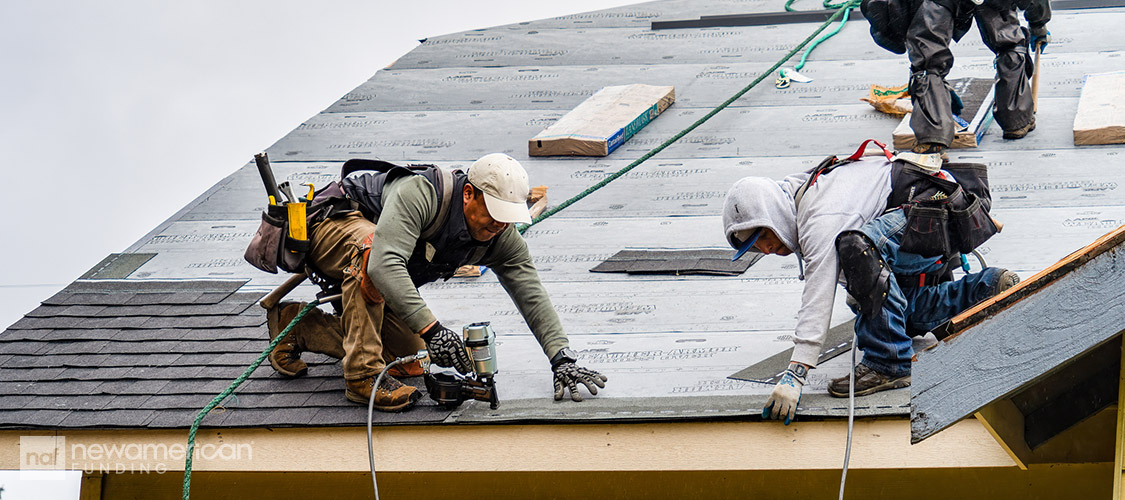Guides
First-Time Homebuyer Guide: Your Step-by-Step Path to Homeownership
September 16, 2024
Buying your first home can be both thrilling and a bit intimidating. It is the largest purchase you may ever make—and you will be living in it. But with the right help and preparation, you may be able to turn your homeownership dreams into a reality.
This step-by-step first-time homebuying guide is packed with expert advice from seasoned real estate agents and mortgage lenders to help aspiring homeowners avoid common pitfalls and hopefully save themselves some money—and heartache—during the process.
We’ll cover everything from preparing your finances to securing the right mortgage, so you can focus on the best part—celebrating your new home.
First-time homebuyers may be eligible for some money-saving perks
While navigating the market as a first-time buyer may be confusing, buying your first home may come with some benefits. You may be eligible for down payment assistance through government programs, non-profit organizations, or even your employer.
This funding, often in the form of grants or loans, may help homebuyers to come up with their down payment and closing costs.
Loans like those backed by the Federal Housing Administration (FHA), the U.S. Department of Veterans Affairs (VA), and the U.S. Department of Agriculture (USDA) offer mortgages with low or even no down payments.
Pre-Step: Start with a homebuying assessment

Before you jump into the homebuying process, start with a homebuying assessment. This is a quick check-up done with a loan officer to look at your finances—like your credit score, savings, income, and any debts.
It may help you figure out how much home you can afford and what you need to do to get ready. Think of it as your roadmap to owning a home so you can avoid surprises along the way.
"I have not seen many people prepare for the biggest milestone in their life in 30 days," said Mosi Gatling, senior vice president of strategic growth and expansion at New American Funding. She is also a Las Vegas-based loan officer. "The more time you give to the process to know the twists and turns, the better the outcome."
Step 1: Get preapproved for a mortgage

Getting preapproved for a loan is one of the most important steps in the homebuying process. Securing a mortgage preapproval allows you to find out if you can qualify for a loan and, if so, how much you are eligible to borrow.
This can help you figure out your budget and narrow down your search to homes you can afford.
To get preapproved, you'll need to share some basic financial details, like your income, debts, and assets. The lender will also review your credit score.
"A preapproval process can be rather quick, same day, depending on how quickly your loan officer can access the three main components: credit, income, and assets," said Raulyer Hernandez, a New American Loan Officer based out of Orlando, FL.
Once preapproved, you'll receive a letter from the lender stating how much they will lend you. This letter will be valid for a certain period, typically 60 to 90 days.
Being preapproved for a loan has several perks. First, it will give you a competitive edge in a hot housing market. Sellers are more likely to accept an offer from a preapproved buyer, as it shows they are likely to be able to fund their offers.
"A buyer should take the time to talk with a loan officer before starting their home search so that they are financially prepared and have learned just what closing costs will be and what their monthly payment will be," said Wayne Curtis, a real estate agent with Sotheby's International Realty based in Baltimore, MD.
"Looking at open houses and falling in love is great,” said Curtis. “But people tend to look at homes above their financial capability, and that only leads to disappointment when they find out what they can afford.”
Finally, getting preapproved will help you speed up the closing process. Once you find a home you want to buy, you can move forward with the purchase quickly.
Step 2: Partnering with a real estate agent

Finding the right real estate agent is a key part of buying your first home. A good agent who is focused on your needs should help to guide you through the homebuying process, protect your financial interests, and ensure you're making decisions with a clear head.
"The best advice I have for first-time homebuyers is to allow me to keep them from getting in their own way," said Las Vegas-based real estate agent Gregg Bloom of Urban Nest Realty. “My job is to protect them financially and make sure they aren't just making an emotional decision.”
When budgeting, remember that because of the recent National Association of Realtors settlement, buyers might need to pay their own agent's commission. However, in some cases, you can negotiate with the seller to cover those costs.
That’s why it’s important to understand the potential costs of working with an agent as you begin your search.
Step 3: Touring homes and open houses

House hunting is one of the most exciting parts of buying your first home. It's your opportunity to explore different neighborhoods, visit open houses, and picture yourself living in new spaces. To make the most of this process, it's important to approach it with a clear plan and an open mind.
Start by defining your home search criteria. Think about what you need in a home. It could be a certain number of bedrooms, a big yard for pets, or a location that is close to schools or work.
Having a clear list of must-haves, along with some nice-to-have features, helps focus your search. This way, you can be efficient while still staying flexible.
Location plays a huge role in finding the right home. Whether you're drawn to the energy of city living or the wide-open spaces of the countryside, choose an area that fits your lifestyle. Consider commute times, nearby amenities, and the overall feel of the neighborhood.
As you visit open houses, make sure the home meets the needs of your family—instead of getting distracted by a stylish kitchen or architectural detail. Staying organized will also be very helpful.
It may also be helpful to shop around to get a sense of what sorts of homes are available in your price range.
"I encourage each buyer to carry a notepad and make notes. This is what helps when it comes time to decide between two homes," said Pamela Young, a real estate agent with eXp Realty based in New Hampshire.
"Each party needs to make their own like/dislike list of the home's attributes,” she continued. “Once done, they can compare their lists, and when the majority of likes are similar, they can now make a logical decision instead of an emotional one."
You'll get a good idea of the market and what's available by visiting open houses and using these tips.
"Make the decision as pragmatic as possible," said Curtis.
Step 4: Make an offer and negotiate on your home purchase

Making an offer on your first home can be scary. But this is your opportunity to balance excitement with smart decision-making.
Start by crafting a strong offer based on thorough research. You want your offer to be comparable to what similar homes in the same area have sold for recently.
"An experienced real estate agent will help a buyer understand the market conditions in the precise neighborhood they want, what the inventory is like, and what the real sale prices have been," said Curtis.
Once your offer is accepted, you'll need to put down earnest money. This is a deposit showing you're serious about buying the home. It’s usually 1% to 3% of the purchase price and will go toward your down payment or closing costs.
In most, but not all cases, earnest money is refundable provided no contracts are broken. Be sure to talk to your real estate agent about contingencies in your contract for your protection.
During this negotiation, you can also ask the seller to pay some of your costs, like your real estate agent's fee or part of the closing costs. Closing costs usually range from 2% to 5% of the purchase price. This can make homebuying more affordable and help you stay within your budget.
This may be more likely in less-competitive areas or for homes that aren’t as popular with buyers. If there are multiple offers on the home, the sellers may choose another offer that doesn’t ask them to make repairs or contribute any additional funds.
Step 5: Choosing the right home loan

Once your offer is accepted, it's time to focus on securing the right mortgage loan.
Choosing a loan can seem complicated with so many available options, especially as each one has its requirements, benefits, and drawbacks.
Conventional Loans are the most common type of mortgage. These loans may offer lower interest rates as well. However, they typically require a higher credit score but offer a smaller down payment under the condition that the borrower pays for mortgage insurance until they reach more than 20% equity in the home.
FHA Loans are backed by the federal government. They are often popular with first-time buyers who have lower credit scores or smaller down payments. Buyers may be able to get a loan that requires just 3.5% down; however, they will be required to pay mortgage insurance on the loan.
VA Loans, available for military members and veterans, offer 100% financing with no down payment. They also boast lower interest rates.
USDA Loans are available for those buying in more rural areas, although they may be available outside of cities as well. The big perk for buyers is these loans do not require a down payment.
Most loans are for 30 years, although some buyers choose 15-year loans. The rates on 15-year loans are often lower, but the monthly payments may be higher to make up for the shorter duration.
Additionally, most loans allow you to lock in your mortgage rate for the life of your loan unless you choose an adjustable-rate mortgage. The rates on these loans generally change over time after an initial period when the rate does not change.
To lock in the lowest mortgage rate for any of these loans, it's key to maintain a strong credit score and manage your debt-to-income ratio.
"The higher your credit score, the better the interest rate you'll qualify for," said Teresa White, a loan officer for New American Funding based in Canyon Lake, TX.
Staying on top of your credit and not taking on additional debt during the loan process may save you thousands over the life of a 30-year loan.
When it comes to the loan process, being prepared is key.
"Providing all documentation, such as tax returns, pay stubs, and bank statements, right away can prevent delays," said White.
Additionally, only make large purchases or transfer funds between accounts once your loan is fully approved to keep everything on track. That means not buying a new car or furniture set before the loan closes.
Buyers also shouldn’t switch jobs during the process as that could affect their ability to qualify for a loan, even if they were previously preapproved for a mortgage.
Step 6: Coordinate your appraisal and home inspection

Once your offer is accepted and your mortgage is underway, buyers need to take care of the home appraisal and home inspection. These steps ensure the home's value aligns with your offer and help identify any potential issues.
An appraisal is a professional estimate of the home's worth. Your lender needs this to make sure the property is worth what you're paying for it.
If the appraisal comes in lower than your offer, you may need to negotiate with the seller or provide extra funds. This step protects both you and the lender from overpaying.
That’s why it’s important not to waive your appraisal contingency unless you have the funds to cover the difference between your offer and what the appraiser says the home is worth.
The home inspection assesses the physical condition of the home. A qualified inspector will check the foundation, roof, electrical, and plumbing systems for any issues. This way you know if you’re buying a home that may have expensive issues.
If problems arise, you can negotiate repairs or request credit at closing.
Real estate agents often help schedule both the appraisal and inspection quickly. Although not required, attending the inspection can be valuable, offering a chance to ask the inspector questions and understand the home's true condition.
Step 7: Negotiate repairs on the home

After the home inspection, it’s normal to find issues that need fixing. This is where negotiating repairs with the seller comes in.
Typically, the contract includes contingencies that allow you to walk away and get your earnest money back if there are too many issues after the inspection or if the home doesn’t appraise at the agreed price, as long as the inspection is completed within a specific time frame outlined in the contract.
"In my experience, I try to avoid homes that have plumbing, electrical, roof, or HVAC issues that are determined by the property inspection," said Ralph DiBugnara, a regional vice president at New American Funding based in Edgewater, N.J. “These can prove to be very costly.”
Start by reviewing the inspection report carefully. Focus on major problems like plumbing, electrical issues, or roof damage—things that affect the home's safety. Smaller cosmetic issues can be handled later.
When deciding what to ask for, it's important to be reasonable if you still want to purchase the home. Asking for too many minor cosmetic repairs might overwhelm the seller.
"Focus on health and safety concerns first," said Curtis.
Sometimes, you could ask for a credit or price reduction instead of having the seller make the repairs. This gives you more control over the work.
Be open to some back-and-forth with the seller to find a fair solution for both sides.
Step 8: Choose home insurance

Choosing the right home insurance is key in protecting your new home which may be your most expensive asset. Home insurance helps cover the cost of damage from events like fire, theft, or natural disasters, and lenders often require it.
Start by comparing policies from different insurance providers. Look for coverage that protects the structure of your home, your belongings, and your liability in case someone gets injured on your property. Some policies may also cover living expenses if damage makes your home unlivable.
It's important to understand what your policy covers and what it doesn't. For example, some areas prone to flooding or earthquakes may require extra coverage. Your real estate agent or lender can recommend what's typically needed in your area.
"The language in home insurance policies can be confusing," said Jeff Snyder, president of Matic Insurance. "What's covered isn't always clear, so it's important to go over your coverage with a licensed insurance advisor to avoid surprises."
While it's tempting to go with the cheapest option, make sure the policy provides enough coverage to protect your home fully. Review deductibles, premium costs, and coverage limits to find the right balance.
Step 9: Close on your first home

Closing is when all the legal and financial details are finalized, and the home officially becomes yours. It's very important to carefully review the closing documents. This is your last chance to make sure everything is correct before signing.
One of the key documents you'll review is the closing disclosure. This lists the final terms of your mortgage. It will show the interest rate, loan amount, and closing costs. Make sure everything matches what you've agreed to, and don't hesitate to ask questions if anything seems unclear.
Once everything is finalized, you'll get the keys, and the home will officially be yours.
Don't be afraid to ask questions if anything doesn't make sense. You're almost at the finish line.
Step 10: Moving into your new home

Now that the paperwork is signed and the keys are yours, it's time to get your new home ready.
Start by creating a first-time homeowner checklist that can help with booking movers, setting up your utilities, forwarding your mail, etc.
It’s also a good idea to change the locks as soon as you move in since you don’t know how many copies of the old keys are out there.
Once that's done, unpack the essentials—bedrooms, bathrooms, and the kitchen—so your home is livable from day one.
As you settle in, focus on adding personal touches that reflect your style. Hang artwork, display family photos, and bring in cozy textiles to make your space warmer and more inviting. These little details help transform your house into a home.
Getting to know your new neighborhood is another exciting part of the process. Take walks, visit nearby shops and restaurants, and introduce yourself to the neighbors.
Your homebuying journey may have had its challenges, but you did it. Congratulations!






 Smart Moves Start Here.
Smart Moves Start Here.